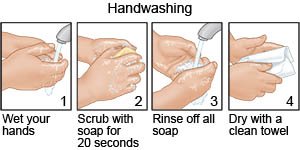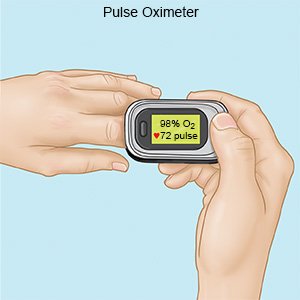Ventilator
Medically reviewed by Drugs.com. Last updated on Apr 6, 2025.
AMBULATORY CARE:
A ventilator
is a machine that helps a person breathe. A ventilator blows oxygen into the lungs and removes carbon dioxide out of the lungs. A ventilator may be needed for a few hours, weeks, or months. Sometimes it is needed for the rest of a person's life.
 |
Have someone call your local emergency number (911 in the US) if:
- You have trouble breathing or feel like you cannot get enough air.
- You have severe shortness of breath or are breathing very quickly.
- Your throat or the front of your neck is pushed to one side.
- You have chest pain.
- Your heart is beating very quickly.
- You have trouble thinking clearly.
Seek care immediately if:
- You have chest pain when you cough or breathe deeply.
- You are sweating heavily, even at rest.
- Your chest movement is not even when you breathe.
- You have blue lips or fingertips.
Call your doctor or pulmonologist if:
- You have a fever or chills.
- You are coughing up a large amount of mucus.
- You hear a crackling noise or feel popping when you touch your skin.
- You are more tired than usual.
- You have trouble catching your breath while you exercise or walk up stairs.
- You have a cough or wheeze.
- You have questions or concerns about your condition or care.
Drugs used to treat this and similar conditions
Omvoh
Omvoh is used to treat moderate to severe ulcerative colitis or Crohn's disease in adults. This ...
Caffeine/sodium benzoate
Caffeine/sodium benzoate systemic is used for respiratory failure
Ventilator education:
You and anyone who cares for you at home will be taught how to use and take care of the ventilator. The person caring for you may need to stay overnight in the hospital to learn how to use the equipment. Education includes the following:
- How to use and maintain the ventilator
- Equipment you need to keep, such as extra oxygen, masks or tubes, and ventilator batteries
- What to do when an alarm is triggered
- How to prevent infections by cleaning the equipment and always washing hands before giving care

- How to use a pulse oximeter to check your blood oxygen level, and how often to check

- How to set up the ventilator to work on battery power so you can move around, if needed
- How to change a trach tube, if you have one
- How to suction mucus from your airway
- How to recognize and report problems with the ventilator or health problems it causes
What else you need to know about a ventilator:
- Ventilators can be invasive or non-invasive. Invasive means the person gets oxygen through an endotracheal tube (trach). A trach is a hollow plastic tube that is placed in the trachea (windpipe) during surgery. Non-invasive means the person gets oxygen through a mask that can be removed.
- Medicines may be given to help decrease anxiety. Sometimes medicine is given to prevent movement while on the ventilator. You will still know what is happening around you.
- You will not be able to cough up secretions. Someone may need to suction to help clear secretions. Suctioning, coughing, and movement can cause an alarm on the ventilator to sound.
- A ventilator can prevent you from talking and eating. If you have a tracheostomy, you may be able to talk. You may need to have a feeding tube so you can receive nutrition and liquids.
How the ventilator will be removed:
- When your condition gets better, healthcare providers will try to let you breathe on your own. This will begin over short periods of time. The time will increase until you can breathe completely on your own. The ventilator and the breathing tube will be removed.
- If you cannot breathe on your for short periods, providers will try again later. You may have to stay on the ventilator for a longer period if you cannot breathe on your own.
Follow up with your doctor or pulmonologist as directed:
Write down your questions so you remember to ask them during your visits.
© Copyright Merative 2025 Information is for End User's use only and may not be sold, redistributed or otherwise used for commercial purposes.
The above information is an educational aid only. It is not intended as medical advice for individual conditions or treatments. Talk to your doctor, nurse or pharmacist before following any medical regimen to see if it is safe and effective for you.
Further information
Always consult your healthcare provider to ensure the information displayed on this page applies to your personal circumstances.
